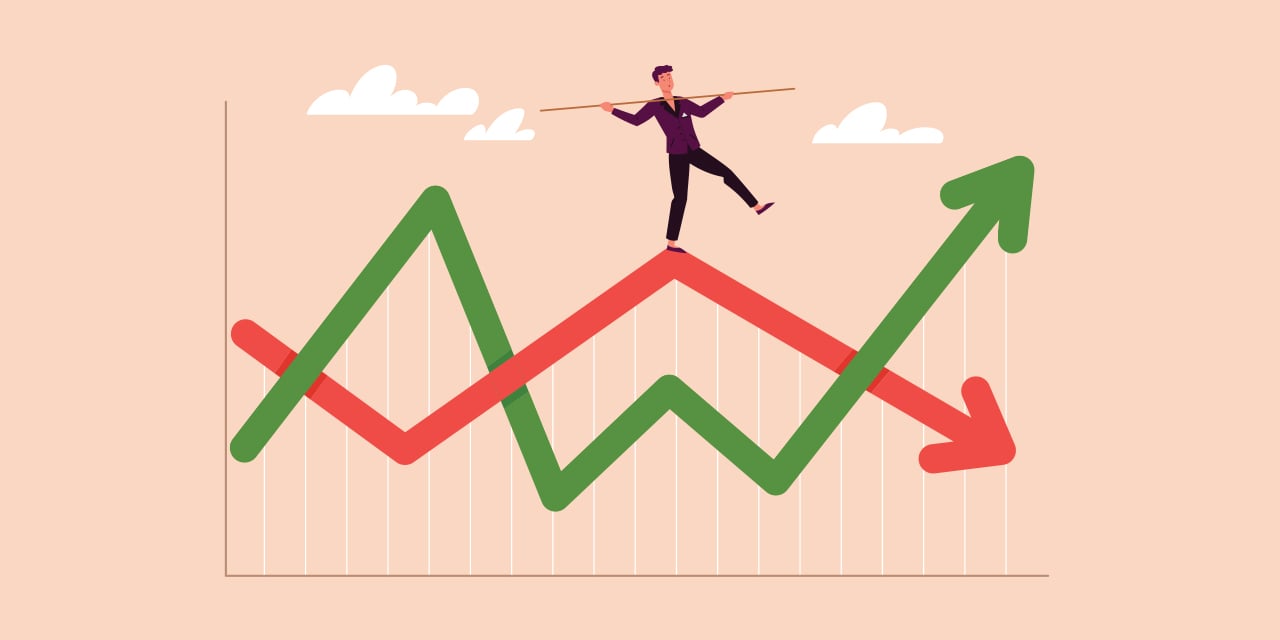
Navigating the Risks of Retiring in a Bear Market
A bear market can hurt more when you’re early in retirement. Here’s what you can do about it.
While no one looks forward to a down market, these periods can be especially challenging for new or soon-to-be retirees. If you’re thinking about retiring at a time when the market is being uncooperative, here is the biggest risk you need plan for – and some strategies to overcome it.
Understanding Sequence-of-Returns Risk
It’s no secret that investing is unpredictable – your portfolio might gain 10% one year and lose 10% the next. But when you’re building assets, you’ll still end up with the same amount no matter when the ups and downs occur. Consider the following two scenarios on a portfolio’s $10,000 opening balance:
- Scenario A: The account shows a +10% return in Year 1 ($11,000), followed by a -10% return in Year 2 ($9,900)
- Scenario B: The account shows a -10% return in Year 1 ($9,000), followed by a +10% return in Year 2 ($9,900)
Whether you start in an up market (+10%) or down market (-10%), when you’re just watching your savings grow, you end up in the same place. The sequence of returns has no impact on your ending balance.
However, the calculation changes when entering retirement – or more specifically, when taking distributions from your retirement accounts. Let’s look at the two scenarios again, but this time with $500 annual withdrawals:
- Scenario A: After a $500 withdrawal ($9,500), the account shows a +10% return in Year 1 ($10,450). After a second $500 withdrawal ($9,950), the account shows a -10% return in Year 2 ($8,955)
- Scenario B: After a $500 withdrawal ($9,500), the account shows a -10% return in Year 1 ($8,550). After a second $500 withdrawal ($8,050), the account shows a +10% return in Year 2 ($8,855)
So what happened? Adding withdrawals into the mix amplified the effect of the down market – in this case by $100, or 1% of the original portfolio balance. A down market early in retirement on top of annual distributions could eat up too much of your wealth too soon, leaving fewer funds intact for when the market (hopefully) recovers. And if that bear market were to last multiple years, you could find yourself needing to radically scale down your retirement expectations – through no fault of your own, other than bad timing.
Strategies for Retiring in a Bear Market
While there’s not much we can do about a bear market, we do have control over how we respond to one. The key to overcoming sequence-of-returns risk is to draw down as little as possible during that down period. Here are some strategies for the newly or nearly retired to consider:
Revisit Your Need for Distributions
Take another look at how you’re planning to fund your actual or anticipated expenses in retirement and consider alternate strategies to minimize how much you take out. For example:
- Charitable giving: Rather than making gifts every year – and risking doing so when the market is falling – make one large gift every few years to a donor-advised fund. You get the tax benefit right away, and then you can transfer money to charities over time and wait for another bull market to replenish the fund.
- Healthcare expenses: If you funded a health savings account while covered by a high-deductible health plan, make sure you exhaust those funds on qualified health expenses before withdrawing from your nest egg.
- Flexible withdrawals: You also might consider taking out more in boom times but pulling back when the market is struggling. That could help you ride out a down market by withdrawing as little as possible.
Build Up Your Cash Accounts
Along the lines of flexible withdrawals, one way to limit how much you need from your retirement accounts is to build up your liquidity through your cash accounts. By maintaining robust reserves of easily accessible cash or short-term cash equivalents like fixed income or money market accounts, you can keep from having to draw down your retirement funds prematurely. Your Baird Financial Advisor can help you take advantage of up markets so you can more easily ride out the down markets.
Explore Your Retirement Account Options
Of course, not all distributions are voluntary. If you are a certain age (currently 72) or older and have a 401(k) or traditional IRA, the IRS will require you to take an annual minimum distribution or risk a 50% tax. Roth IRAs, however, do not have required minimum distributions, allowing you to withdraw only the funds you need. To provide that flexibility in the future, you might consider a Roth conversion before retirement. While converting to a Roth IRA would require paying a tax on the conversion amount, doing so during a down market can reduce the taxes you’ll pay on the conversion while allowing a future market recovery to happen in a tax-free account.
Be Wary of Debt
It makes sense to want to enter retirement with as little debt as possible: With no or little income to service it, debt can be a drag on your finances and drain your resources at a time when you can least afford it. Nevertheless, a recent U.S. Government and Accountability Office study found that debt among retirees is increasing: Not only did more older households have debt in 2016 compared to 1989, but they held nearly triple the amount of debt, especially home, credit card and student loan debt. Excessive debt in retirement doesn’t just affect your financial health – recent research found that the more debt older adults carry into retirement, the worse their physical and mental health outcomes are as well.
Reimagine What Retirement Looks Like for You
One final strategy to plan for sequence-of-returns risk in retirement is not to retire at all – or to redefine what retirement means to you. According to the Bureau of Labor Statistics, Americans aged 65 and older have steadily increased their part-time and full-time participation in the workforce over the past decade, be it through pushing off retirement, starting a new career or even job cycling (i.e., working for only part of the year). In addition to forestalling drawing down funds in a bear market, working in retirement could also provide other significant benefits, both financial (such as the ability to delay filing for Social Security until full retirement age) and personal (such as increased socialization). Just be aware that if a down market forces companies to consider layoffs, they often look to recent additions or part-time staff first.
Of course, planning for this kind of retirement risk can incorporate portfolio solutions, including adequate diversification and an asset mix that is well-positioned to take advantage of any market bounce. By working with a Baird Financial Advisor, you can be confident that your financial plan for retirement has accounted for potential risks. Your advisor can walk you through the steps they’ve taken to ensure you’re prepared for whatever the market has in store.
This information has been developed by a member of Baird Wealth Solutions Group, a team of wealth management specialists who provide support to Baird Financial Advisor teams. The information offered is provided to you for informational purposes only. Robert W. Baird & Co. Incorporated is not a legal or tax services provider and you are strongly encouraged to seek the advice of the appropriate professional advisors before taking any action. The information reflected on this page are Baird expert opinions today and are subject to change. The information provided here has not taken into consideration the investment goals or needs of any specific investor and investors should not make any investment decisions based solely on this information. Past performance is not a guarantee of future results. All investments have some level of risk, and investors have different time horizons, goals and risk tolerances, so speak to your Baird Financial Advisor before taking action.


